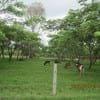Explore all the information on
Silage and forage
Welcome to the page about Silage and forage of Engormix; a source of knowledge on Silage and forage.
...
Comments : 0
Recommendations: 0
John Koorn (Laidig Company) discusses the design and specifications for a silo, during FIGAP 2022 in Guadalajara, Mexico....
Comments : 0
Recommendations: 0
.jpg&w=3840&q=75)

Amino Acids from Rendered Products for Aquaculture
Suggested link
Francesca Mazza (Arm & Hammer) presents her poster on yeast and feed quality, during the Symposium on Gut Health in St. Louis, USA....
Comments : 0
Recommendations: 0
INTRODUCTION Goats are very important to the world’s food security and supply because of their ability to utilize fibrous materials not of immediate nutritional value to people. Feed accounts for about 70% of the cost of the livestock production, approximately one-half of the production cost for ruminants is in feed used for body weight and maintenance requirements. However, one of the most important factors affecting the energy requirement for maintenance (ME m )...
Comments : 1
Recommendations: 0
...
Comments : 0
Recommendations: 0
...
Comments : 0
Recommendations: 0
.jpg&w=3840&q=75)

Amino Acids from Rendered Products for Aquaculture
Suggested link
...
Comments : 0
Recommendations: 0
...
Comments : 1
Recommendations: 1
Feed mixing and delivery is one of the most important activities on the dairy. Mixing and feeding a total mixed ration (TMR) is a multiple-times-per-day activity. Doing this job accurately and consistently time and time again, batch after batch and day after day is critical to production (volume and components), animal health and overall farm economics.
Accuracy and consistency of mixing and feed delivery may be one of the greatest effectors of production and feed efficiency on the...
Comments : 3
Recommendations: 6
While it is true that corn (maize) silage will ensile without the use of an inoculant, using a high quality, proven inoculant can significantly improve the efficiency of the ensiling fermentation, improving dry matter and energy recovery. Using a proven inoculant containing Lactobacillus buchneri will also help prevent heating and spoilage at feedout. ...
Comments : 11
Recommendations: 0
.jpg&w=3840&q=75)

Amino Acids from Rendered Products for Aquaculture
Suggested link
Luiz Ferraretto (University of Florida) explained the importance of fiber and starch digestibility among other topics, during AMENA 2019 in Puerto Vallarta, Mexico....
Comments : 6
Recommendations: 16
Silvopastoral systems One of the limitations for the efficient production of meat and milk in livestock systems of Venezuela is the scarcity of high-protein forage from plants adapted to the acid soils and prolonged droughts of the Llanos (savannas). The Llanos cover an estimated area of 15-20 M ha predominantly in the southeast and southwest of the country. They are mainly covered with native grasses (Trachypogon spp.), which have low carrying capacity (0.10-0.25 AU/ha; 1 AU =...
Comments : 1
Recommendations: 0
Introduction Quality forage resources as grasslands, fruit juice industry with a cultivated forage crops pulp residue are of great importance for Turkey. The share of total arable area of livestock feed crops sowing areas of advanced countries is 10%, but, it is, unfortunately, just 3.5% in Turkey. Rich pulp in terms of a significant amount of the water released as waste material in Turkey cannot be assessed at the desired level for ruminant animals. Thus, for making it harmless...
Comments : 0
Recommendations: 2
INTRODUCTION Since World War II, food insecurity has been an issue concerning the world’s poorest, with the received wisdom being that such insecurity could be alleviated by eliminating local poverty (McLaren, 1974) and improving food distribution since, globally, food has historically been produced in excess of world population needs. However, future food and nutritional security has become a major concern for both rich and poor, given the present concurrence of rising...
Comments : 0
Recommendations: 1
.jpg&w=3840&q=75)

Amino Acids from Rendered Products for Aquaculture
Suggested link
Livestock management requires monitoring forage production (Guido et al., 2014; Irisarri et al., 2014; Pacín and Oesterheld, 2015; Rahman et al., 2014). As forage production is difficult to measure in the field (Sala and Austin, 2000), individual farmers and organizations are increasingly relying on models based on remote sensing (Fritz et al., 2019; Grigera et al., 2007; Hammer et al., 2010; McCall and BishopHurley, 2003; Paruelo et al., 2000). Most of these models derive from...
Comments : 0
Recommendations: 0
Author details: 1 School of Agriculture and Food Sciences, The University of Queensland, Brisbane, QLD, Australia; 2 Instituto de Tecnología Agropecuaria (INTA), Leales, Tucumán, Argentina; 3 Centro para la Investigación en Sistemas Sostenibles de Producción Agropecuaria (CIPAV), Cali, Colombia; 4 Instituto de Ciencia Animal (ICA), La Habana, Cuba; 5 Formerly: Universidad de Los Andes, Facultad de Ciencias Forestales y Ambientales,...
Comments : 0
Recommendations: 0
The LAB from SYNBIOTECH are able to produce organic acids and fermentation metabolites quickly and lower the pH value to inhibit the growth of spore-forming bacteria, fungi and other spoilage bacteria. Thus, achieving the optimum preservation of silages.
...
Comments : 2
Recommendations: 1
Introduction The work of Dr. Mike Allen, Michigan State in the late 80’s, measuring NDF digestibility of different corn silage hybrids, initially resulted in much controversy. There was much resistance to the concept that differences in fiber digestibility in corn silage could have an impact on animal performance. He proceeded to do studies with BMR hybrids as well as with conventional hybrids both in lactating cow studies as well as a demonstration of a wide range...
Comments : 4
Recommendations: 4
.jpg&w=3840&q=75)

Amino Acids from Rendered Products for Aquaculture
Suggested link
Introduction Sunflower is a well-known silage crop which is grown worldwide including Turkey. Compared to corn silage sunflower silage provides higher dry matter yield with better cold and heat resistance and drought tolerance. It is also easier to get sunflower adapted to wide range of climatic conditions since it possesses higher concentrations of crude protein (CP) and ether extract (EE) content (Goes et al., 2012; Gandra et al., 2017). However, these advantages of sunflower...
Comments : 0
Recommendations: 3
Introduction The major use of rangelands is grazing or browsing by livestock and wild herbivores. Semiarid and arid rangelands are often fragile and subjected to accelerated soil erosion if not managed appropriately. If rangelands are mismanaged, so that plants fail to provide sufficient soil cover, the composition of plant community changes, resulting in reduced productivity and increased erosion. Continued abuse of the rangeland system can also result in severe land...
Comments : 0
Recommendations: 1






















